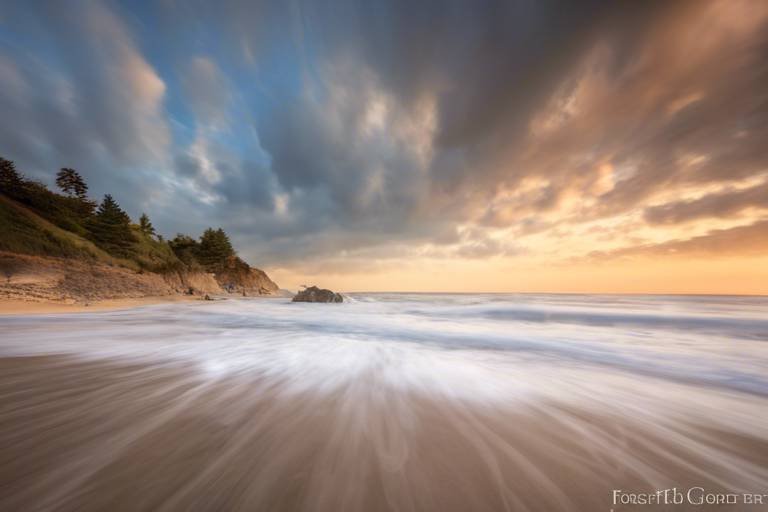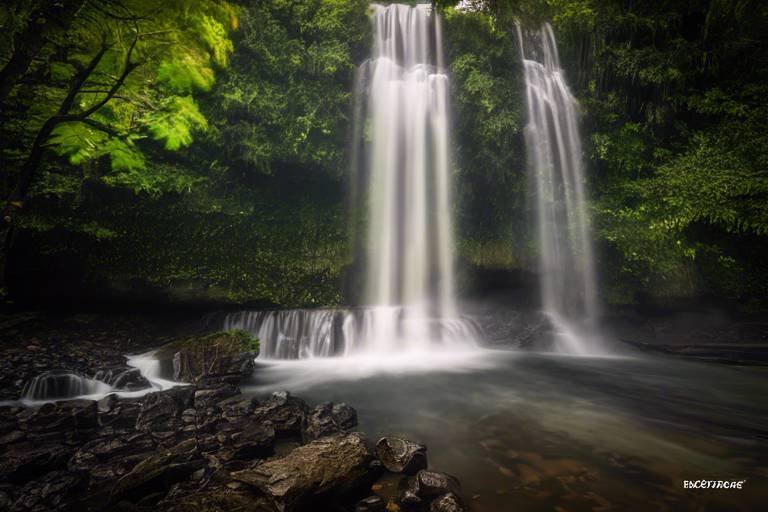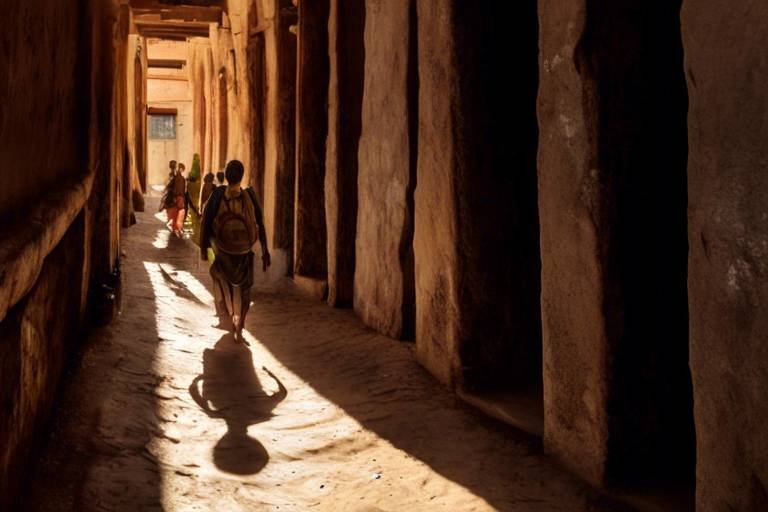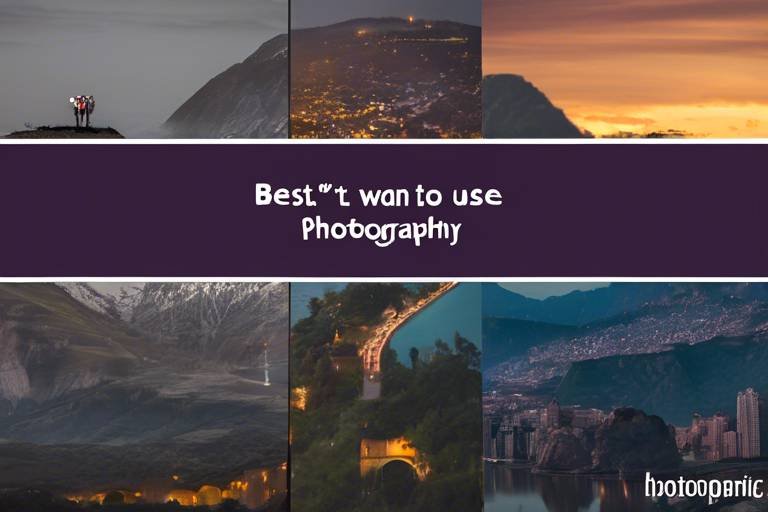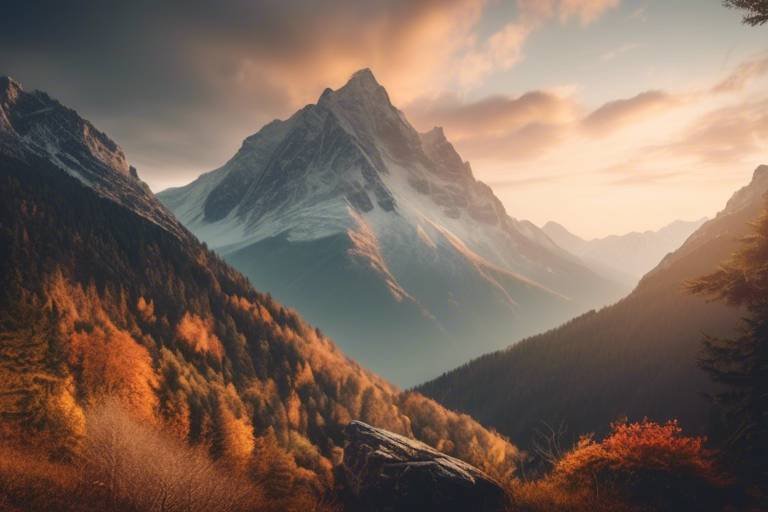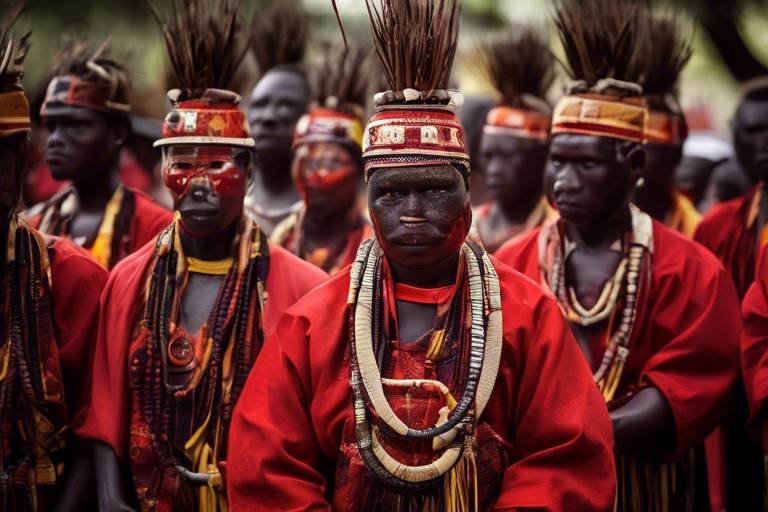How to Use Depth of Field to Enhance Your Travel Photos
When it comes to travel photography, mastering the art of using depth of field can truly elevate the quality of your photos and make them stand out. Depth of field refers to the range of distance that appears acceptably sharp in an image, creating a sense of dimension and focus. By understanding how to manipulate depth of field effectively, you can enhance the visual storytelling of your travel photos and capture the essence of your surroundings in a captivating way.

Understanding Depth of Field in Photography
When delving into the realm of photography, understanding the concept of depth of field is crucial for capturing captivating travel photos. Depth of field refers to the range of distance in a scene that appears sharp and in focus. It plays a significant role in determining the visual impact of your images, influencing composition and storytelling.
Imagine a scenario where you are photographing a stunning landscape during your travels. By manipulating the depth of field, you can choose to either isolate a specific subject in the foreground while blurring the background into a dreamy bokeh effect, or ensure that every element from the foreground to the distant horizon is sharp and detailed.
Depth of field is not merely a technical aspect of photography but a powerful tool that allows you to guide the viewer's gaze and evoke emotions through your images. By mastering the art of depth of field, you can elevate the quality of your travel photos and create visual narratives that resonate with viewers on a deeper level.
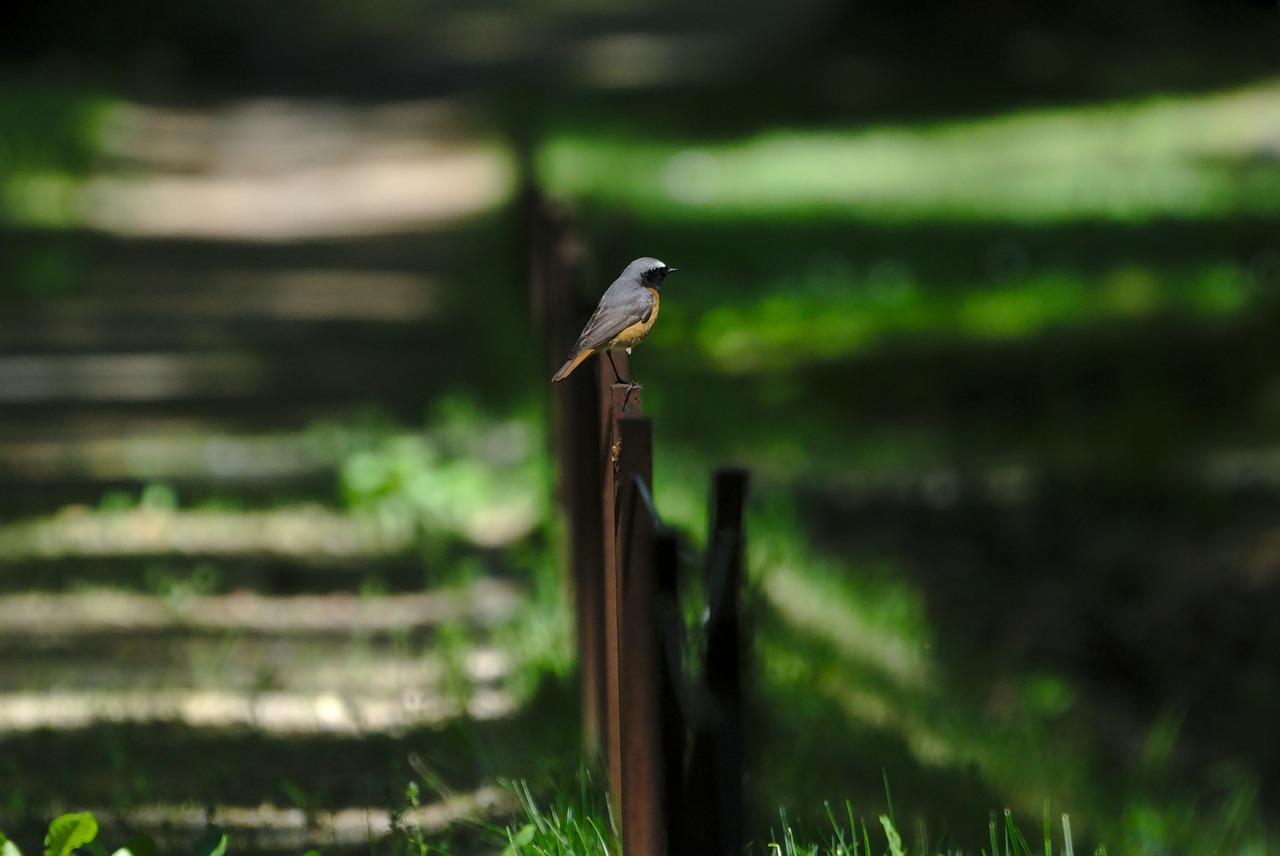
Types of Depth of Field
When it comes to photography, understanding the types of depth of field can significantly impact the quality and visual appeal of your travel photos. Depth of field refers to the range of distance that appears acceptably sharp in an image. By mastering the different types of depth of field, you can effectively enhance the composition and storytelling in your travel photography.
There are primarily two types of depth of field that photographers commonly utilize: shallow depth of field and deep depth of field. Each type offers unique opportunities to create compelling and visually striking travel photos.
Shallow Depth of Field:
Shallow depth of field techniques involve using a wide aperture to create a blurred background effect, also known as bokeh. This technique is ideal for isolating your subject and making it stand out against a soft, dreamy background. By blurring distracting elements in the background, you can draw the viewer's attention to the main subject of your travel photo, creating a sense of intimacy and focus.
Photographers often use shallow depth of field when capturing portraits, close-up shots, or emphasizing a specific subject in a busy environment. The blurred background adds a sense of depth and dimension to the image, enhancing the overall visual impact.
Deep Depth of Field:
In contrast, deep depth of field techniques aim to keep the entire scene in focus, from the foreground to the background. By using a narrow aperture, photographers can capture intricate details and maintain sharpness throughout the image. This approach is ideal for landscape photography, architectural shots, and capturing expansive scenes with multiple focal points.
Deep depth of field allows you to showcase the full context of a scene, ensuring that every element is sharp and clear. It is particularly effective when you want to convey a sense of vastness and grandeur in your travel photos, emphasizing the depth and complexity of the environment.
Mastering both shallow and deep depth of field techniques can elevate the visual storytelling in your travel photography, allowing you to create dynamic and engaging images that captivate viewers and evoke a sense of wonder and exploration.
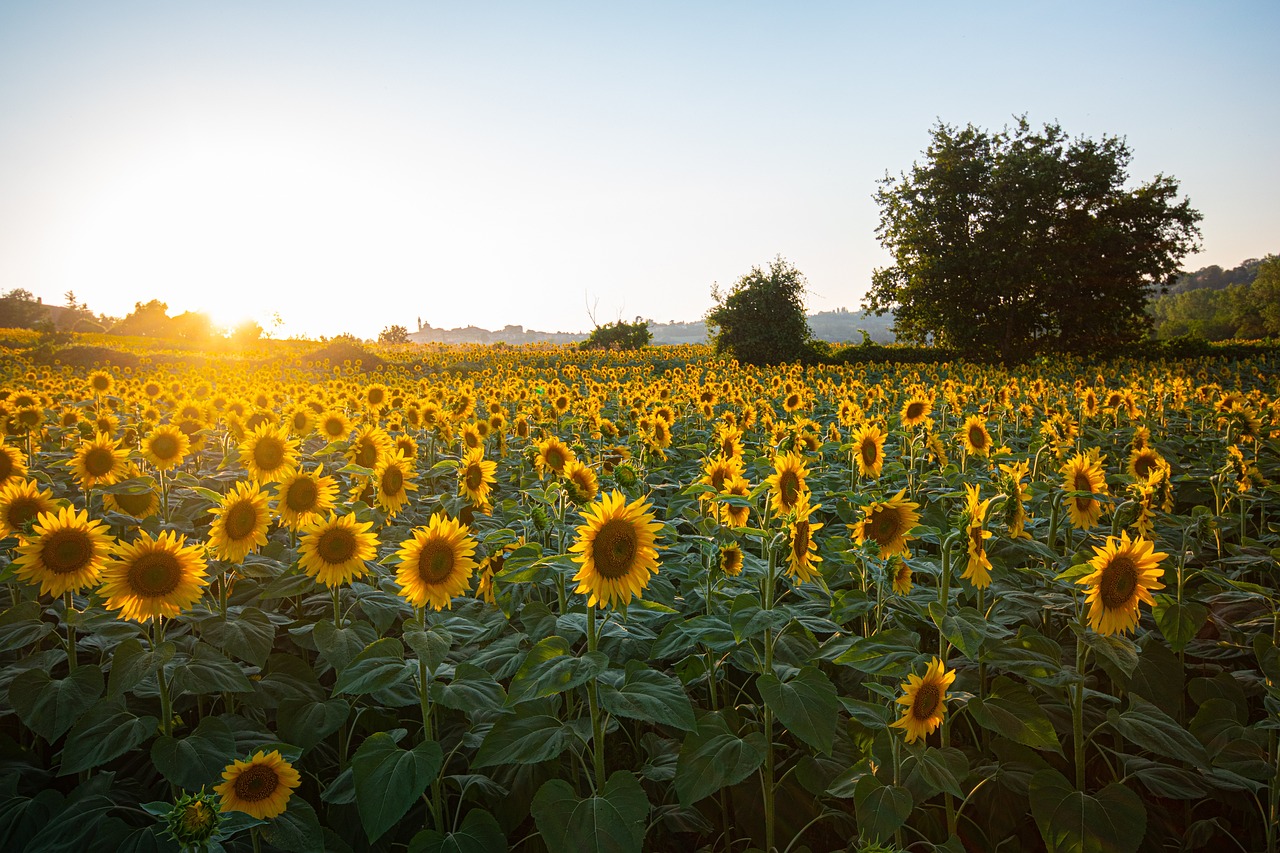
Shallow Depth of Field Techniques
When aiming to create captivating travel photos, mastering the art of shallow depth of field techniques can significantly enhance the visual impact of your images. By understanding how to blur the background effectively, you can make your subject stand out and draw the viewer's attention precisely where you want it.
One of the primary methods to achieve a shallow depth of field is by using a wide aperture setting, such as f/2.8 or lower, depending on your lens capabilities. This allows more light to enter the camera, resulting in a smaller area of sharp focus and a beautifully blurred background that adds a sense of depth and dimension to your travel photos.
Additionally, the distance between your subject and the background plays a crucial role in creating a pronounced shallow depth of field effect. By placing your subject closer to the camera while keeping the background further away, you can further accentuate the blur and separation between the two, adding a professional touch to your travel photography compositions.
Moreover, utilizing prime lenses with wider apertures can greatly assist in achieving a shallow depth of field. Prime lenses, such as a 50mm f/1.8 or a 35mm f/1.4, offer excellent low-light performance and the ability to create stunning bokeh effects, enhancing the overall aesthetic appeal of your travel photos.
Experimenting with different angles and perspectives can also help in maximizing the impact of shallow depth of field techniques. By shooting from a lower angle or incorporating foreground elements, you can create a sense of depth and immersion in your travel images, making them more engaging and visually dynamic.

Deep Depth of Field Techniques
When it comes to capturing travel photos with deep depth of field, the goal is to keep everything in focus, from the foreground to the background. This technique is often used to showcase intricate details of a scene, such as a vast landscape or a bustling city street. One effective method to achieve deep depth of field is by using a small aperture, such as f/16 or higher. By narrowing the aperture, you allow less light to enter the lens, resulting in a greater depth of field.
Another technique to enhance deep depth of field is to focus on a point about one-third into the scene. This technique, known as the hyperfocal distance, ensures that everything from half the distance to infinity remains sharp and in focus. By carefully selecting the focal point and adjusting your camera settings, you can create stunning travel photos that capture the essence of a place in its entirety.
Additionally, using a wide-angle lens can help achieve deep depth of field by inherently providing a larger depth of field compared to telephoto lenses. Wide-angle lenses allow you to capture more of the scene in focus, making them ideal for landscape photography where you want to showcase the vastness of a location. By combining the use of a small aperture, strategic focusing, and the right lens choice, you can master the art of deep depth of field in your travel photography.
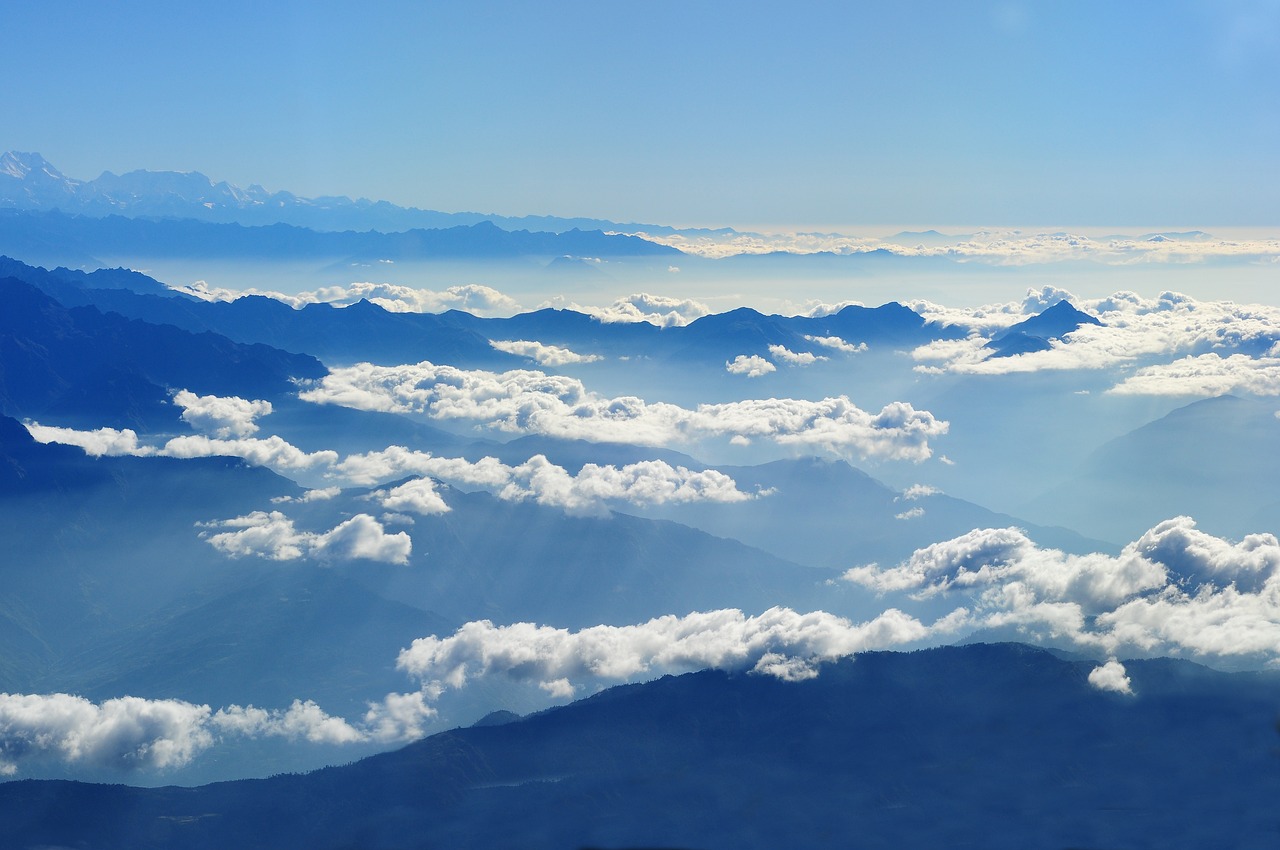
Factors Influencing Depth of Field
When it comes to capturing stunning travel photos, understanding the factors that influence depth of field is crucial. Depth of field, controlled by settings like aperture, focal length, and distance, plays a significant role in the overall composition and storytelling of your images. By mastering these factors, you can enhance the visual appeal and narrative of your travel photography.
Aperture, one of the key elements influencing depth of field, determines how much light enters the camera lens and impacts the sharpness of your subject against the background. A wider aperture (lower f-stop number) creates a shallower depth of field, ideal for isolating your subject and creating a blurred background that enhances focus. On the other hand, a narrower aperture (higher f-stop number) increases depth of field, keeping more of the scene in focus and suitable for landscape shots where intricate details matter.
Another factor to consider is the focal length of your lens, which affects the compression and perspective of your travel photos. Shorter focal lengths, such as wide-angle lenses, provide a broader view and inherently have a deeper depth of field, making them ideal for capturing expansive landscapes or cityscapes with sharp details from foreground to background. In contrast, longer focal lengths, like telephoto lenses, compress the scene and create a shallower depth of field, perfect for isolating subjects from busy backgrounds and emphasizing specific elements within the frame.
Distance from your subject also plays a role in determining depth of field. The closer you are to your subject, the shallower the depth of field becomes, allowing you to emphasize specific details while blurring out distractions in the background. Conversely, increasing the distance between your subject and the background can help in achieving a deeper depth of field, ensuring that both the foreground and background elements are sharp and well-defined in your travel photos.
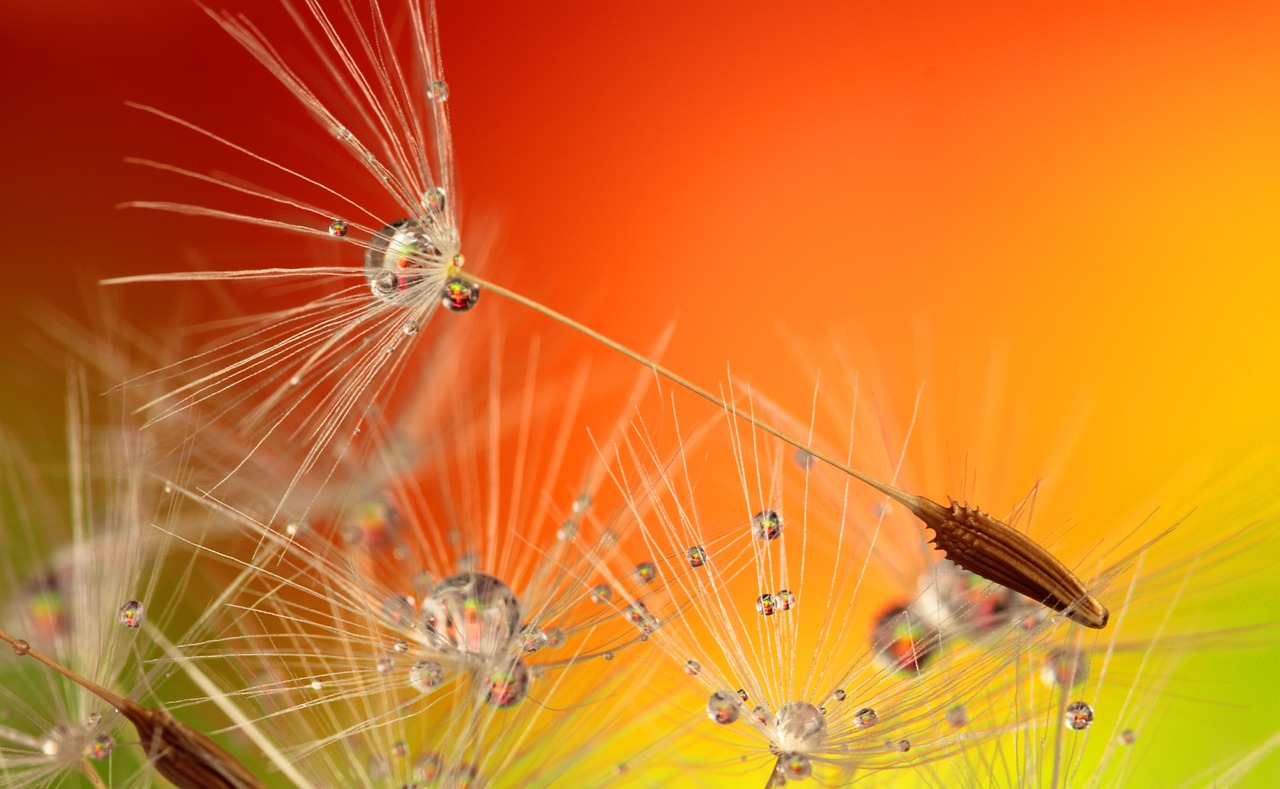
Using Aperture for Depth of Field Control
When it comes to controlling depth of field in your travel photography, mastering the use of aperture is essential. Aperture refers to the opening in the lens through which light passes to reach the camera sensor. By adjusting the aperture settings, you can control the amount of light entering the lens, as well as the depth of field in your photos.
The aperture setting is measured in f-stops, with a lower f-stop value indicating a larger aperture opening and shallower depth of field. Conversely, a higher f-stop value results in a smaller aperture opening and deeper depth of field. Understanding how aperture impacts depth of field allows you to create compelling visual effects in your travel photos.
When shooting with a wide aperture (e.g., f/1.8 or f/2.8), you can achieve a shallow depth of field, which is ideal for isolating your subject from the background. This technique works well for portrait shots or when you want to draw attention to a specific element in the frame while blurring out distractions.
On the other hand, using a narrow aperture (e.g., f/11 or f/16) results in a deep depth of field, keeping both the foreground and background in focus. This is beneficial for landscape photography or when you want to capture intricate details throughout the scene without any part appearing blurry.
Experimenting with different aperture settings allows you to play with the depth of field and creatively enhance the visual impact of your travel photos. Whether you want to create a dreamy, blurred background or capture sharp details from foreground to background, mastering aperture control is key to achieving your desired effects.
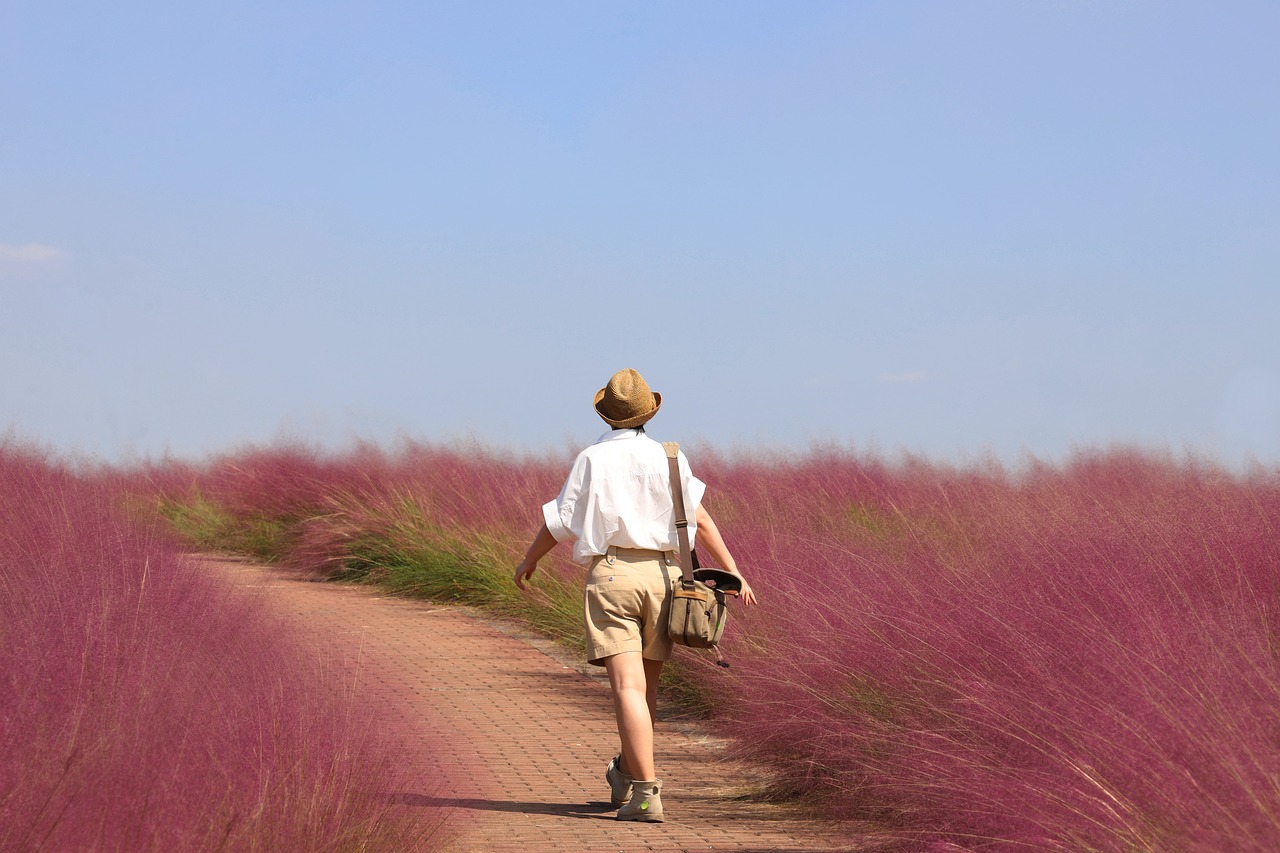
Utilizing Focal Length for Creative Depth of Field
When it comes to creating captivating travel photos, the focal length of your lens plays a crucial role in shaping the depth of field and visual impact of your images. By understanding how to utilize different focal lengths creatively, you can enhance the storytelling aspect of your travel photography.
Wide-angle lenses, typically ranging from 14mm to 35mm, are perfect for capturing expansive landscapes and vast scenes with a deep depth of field. These lenses allow you to include more elements in your frame while maintaining sharp focus throughout, making them ideal for showcasing the grandeur of natural wonders or architectural marvels.
On the other hand, telephoto lenses, such as 70mm to 200mm, compress the perspective and isolate subjects from their background, creating a shallow depth of field effect. This can be particularly effective when you want to emphasize a specific subject in a busy environment or when shooting portraits against a blurred backdrop to draw the viewer's attention directly to the person.
Experimenting with different focal lengths enables you to play with the visual dynamics of your travel photos. By choosing the right focal length based on your creative vision, you can craft images that evoke specific emotions and narratives, adding depth and interest to your travel photography portfolio.

Practical Tips for Enhancing Depth of Field in Travel Photography
Enhancing depth of field in travel photography is crucial for creating visually captivating images that tell a compelling story. To achieve stunning results, consider the following practical tips:
1. Choose the Right Aperture: Selecting the appropriate aperture setting plays a significant role in controlling depth of field. For a shallow depth of field with a blurred background, use a wide aperture (small f-stop number). Conversely, for a deep depth of field where everything is in focus, opt for a narrow aperture (large f-stop number).
2. Focus on the Subject: Ensure your main subject is sharp and in focus to draw the viewer's attention. Use autofocus or manual focus to precisely capture the details of your subject while creating a pleasing blur in the background.
3. Consider Composition: Pay attention to the composition of your shot to enhance depth of field. Position your subject in the foreground and include elements in the background to add layers and depth to your travel photos.
4. Experiment with Focal Length: Explore different focal lengths to alter the perspective and depth of field in your images. Wide-angle lenses can exaggerate depth, while telephoto lenses compress the scene, providing unique opportunities for creative storytelling.
5. Use Leading Lines and Foreground Elements: Incorporate leading lines and foreground elements to guide the viewer's eye through the image and create a sense of depth. By strategically placing objects in the foreground, you can add visual interest and depth to your travel photos.
6. Mind the Background: Pay attention to the background of your composition to avoid distractions that detract from the main subject. Choose simple backgrounds or use a wide aperture to blur any distracting elements and emphasize the subject.
7. Practice Depth of Field Bracketing: Experiment with different depth of field settings by taking multiple shots at varying apertures. This technique allows you to compare the results and choose the most effective depth of field for each scene.
By implementing these practical tips, you can master the art of enhancing depth of field in your travel photography, creating captivating images that engage viewers and evoke a sense of wanderlust.
Frequently Asked Questions
- What is depth of field in photography?
Depth of field refers to the range of distance in a photo that appears acceptably sharp. It is a crucial element in photography that can greatly impact the composition and storytelling of travel photos.
- How does depth of field affect travel photography?
Depth of field can help to isolate the main subject from the background, creating a more visually appealing image. It allows photographers to control where the viewer's eye is drawn within the frame, enhancing the narrative of the travel story being told.
- What are the different types of depth of field?
There are two main types of depth of field - shallow and deep. Shallow depth of field is often used to blur the background and emphasize the subject, while deep depth of field keeps the entire scene sharp and detailed.
- How can I achieve a shallow depth of field effect in my travel photos?
To achieve a shallow depth of field, you can use a wide aperture (small f-stop number) and position your subject at a distance from the background. This technique helps in creating a beautiful background blur that makes the subject pop.
- What factors influence depth of field in travel photography?
Aperture, focal length, and distance to the subject are the key factors that influence depth of field. Understanding how these elements work together can help you effectively control the depth of field in your travel photos.




